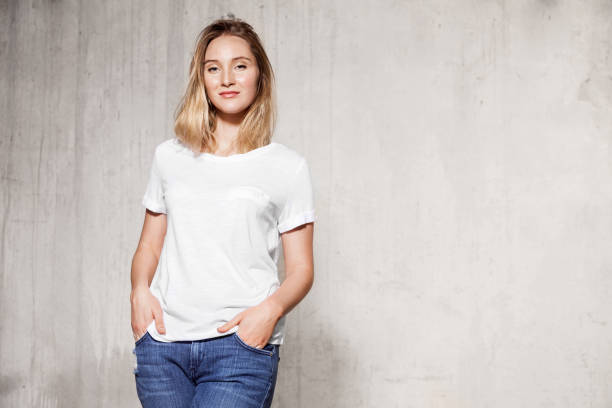There’s a longstanding sartorial stipulation that leaves many of us questioning our post-summer wardrobe choices: the taboo against wearing white after Labor Day. While this decree might have once dominated the fashion norms, its relevance has waned with time. This article delves into the origins of this curious fashion rule, explores its transformation, and debunks myths around the necessity of not wearing white once the Labor Day holiday passes.
Introduction to the Labor Day Fashion Rule
For many, wearing white signifies the essence of summer – a palette reflecting the lighter moods and warmer days. However, the arrival of Labor Day traditionally heralds the unofficial end to summer, and with it, the retirement of white wardrobes. But what is the rationale behind this rule, and why has it persisted? Throughout this exploration, we will unfold the layers of history, societal influence, and industry pressures that have shaped this fashion guideline.

The Origins of the ‘No White After Labor Day’ Rule
The “No White After Labor Day” rule is a longstanding fashion guideline rooted in American history, with origins that are both practical and tied to social status. While its relevance has diminished over time, the rule provides an interesting glimpse into the past of fashion etiquette. Here are the key points regarding its origins:
- Seasonal Practicality: Initially, the rule was based on practicality. White clothing, being lighter and cooler, was favored during the summer months. After Labor Day, which marks the unofficial end of summer in the United States, darker colors were deemed more appropriate for the cooler weather.
- Social Status Symbol: In the late 19th and early 20th centuries, wearing white in the summer became a status symbol among the wealthy. It indicated you could afford to wear and maintain white clothing, which was more prone to showing dirt and stains. Adhering to this fashion rule became a way for the upper class to set themselves apart from the lower class.
- Enforcement by Fashion Magazines: Fashion magazines of the early 20th century, which were often the arbiters of style and etiquette, began to enforce this rule more strictly, further cementing its place in American fashion culture.
Today, the “No White After Labor Day” rule is considered outdated by many, with fashionistas and designers alike embracing white as a chic color choice year-round. This shift reflects broader changes in fashion, where individual expression and breaking traditional norms are celebrated.
Gilded Age Society and Symbolism
During the Gilded Age – an era marked by rapid economic growth and a display of wealth among the American upper class – white clothing was worn not only for its coolness in the summer heat but also as a symbol of affluence. Wearing white, an impractical color that required significant maintenance, was a subtle display of social status, as only those with ample resources could afford to keep white garments in pristine condition. This era solidified the association of white with leisure and prosperity, leading to its preferred use during summers vacationing in places like Newport and the Hamptons.
Post-Labor Day Fashion: A Social Signifier
As Labor Day became a federal holiday in the United States, marking the culmination of summer, socialites traded their lighter clothes for darker colors symbolic of city life and work. This change also served to distinguish the upper echelons from those who were unaware of or could not afford such seasonal luxury. Thus, white linens were packed away, and richer, darker clothes took precedence, putting a clear divider on what was appropriate before and after the holiday.
Societal and Fashion Industry Evolution
Changing Perceptions in Modern Times
Society’s perspective on fashion has evolved dramatically as accessibility to diverse clothing has widened, and adherence to such strict guidelines has dwindled. This shift reflects a broader social change, where class lines have blurred and individual expression is celebrated. Designers and style icons have routinely stood in opposition to outdated fashion rules by not only designing but also wearing white ensembles beyond the early September boundary.
The Influence of Global Fashion Trends
Globalization has ushered in an age where traditional seasonal fashion rules play second fiddle to a more eclectic, personal approach. People from different hemispheres, climates, and cultures integrate white into their wardrobes year-round, influencing global fashion trends. The internet has also played a role in democratizing fashion, making ‘rules’ such as the ban on wearing white after Labor Day seem provincial and outdated.

Breaking the Rules: Why You Can Wear White Year-Round
Contemporary Fashion Icons and White Wardrobes
Fashion icons of our age, from celebrities to influencers, can be seen strutting in whites well into the cooler months, signaling the acceptance of white as a color beyond temporal constraints. This leads the charge in eschewing traditional dictates for a more inclusive fashion landscape. As they are frequently photographed at events and street styles, these trendsetters embolden others to push boundaries and create their unique style narratives.
Seasonal White Fabrics and How to Wear Them
One of the keys to wearing white all year is choosing the right fabrics. The transition from summer-centric cotton and linen to heavier materials like wool or denim allows white clothing to be seasonally appropriate. Here is a curated table listing suggested fabrics for incorporating white into your colder season clothing:
| Fall/Winter Fabric | Examples of White Clothing |
|---|---|
| Wool | White coats, skirts |
| Cashmere | Sweaters, scarves |
| Denim | White jeans, jackets |
| Corduroy | Pants, blazers |
| Leather | White boots, belts |
The versatility of white is also exemplified through contrasting combinations with darker clothes, layering, and accessorizing. By considering texture and synergizing with elements that are seasonally apt, one can create harmonious and stylish winter white looks.

Conclusion
The ‘no white after Labor Day’ mandate, immersed in a history of social stratification and seasonal change, has loosened its grip on fashion ethos. As societal norms and fashion protocols have evolved, so has the freedom to wear white at any time of the year. Ultimately, fashion is an individual’s opportunity to convey their personality and tastes; arbitrary rules have no place curtailing this creativity. So, when faced with the choice of wearing white after Labor Day, remember that the only opinion that truly matters is your own.
Frequently Asked Questions
- When did the ‘no white after Labor Day’ rule start? The rule started during the Gilded Age in the late 19th to early 20th century. It was particularly observed among the wealthy, serving as a means to set themselves apart from other societal groups after the summer season.
- Is it still considered a fashion faux pas to wear white after Labor Day? In modern fashion discourse, wearing white after Labor Day is no longer considered a faux pas. The fashion industry has moved towards a more liberal and expressive approach, leaving behind such dated directives.
- How can I incorporate white into my fall and winter wardrobe? To weave white into your wardrobe post-summer, opt for heavier and textured fabrics such as knits, denim, or leather. White can also be worn as an accent piece paired with darker clothes to give a crisp contrast to outfits.
- Have any popular fashion designers or celebrities openly defied this rule? Yes, numerous fashion designers and celebrities wear white beyond summer, intentionally or not, contributing to the shift in perception around this antiquated fashion rule.
- What’s the best way to care for white clothing to keep it looking fresh outside of the summer season? Maintaining white clothing involves separating them from colors during washes, prompt stain removal, and proper storage to prevent yellowing. It’s also important to select high-quality white pieces that can endure multiple seasons.
